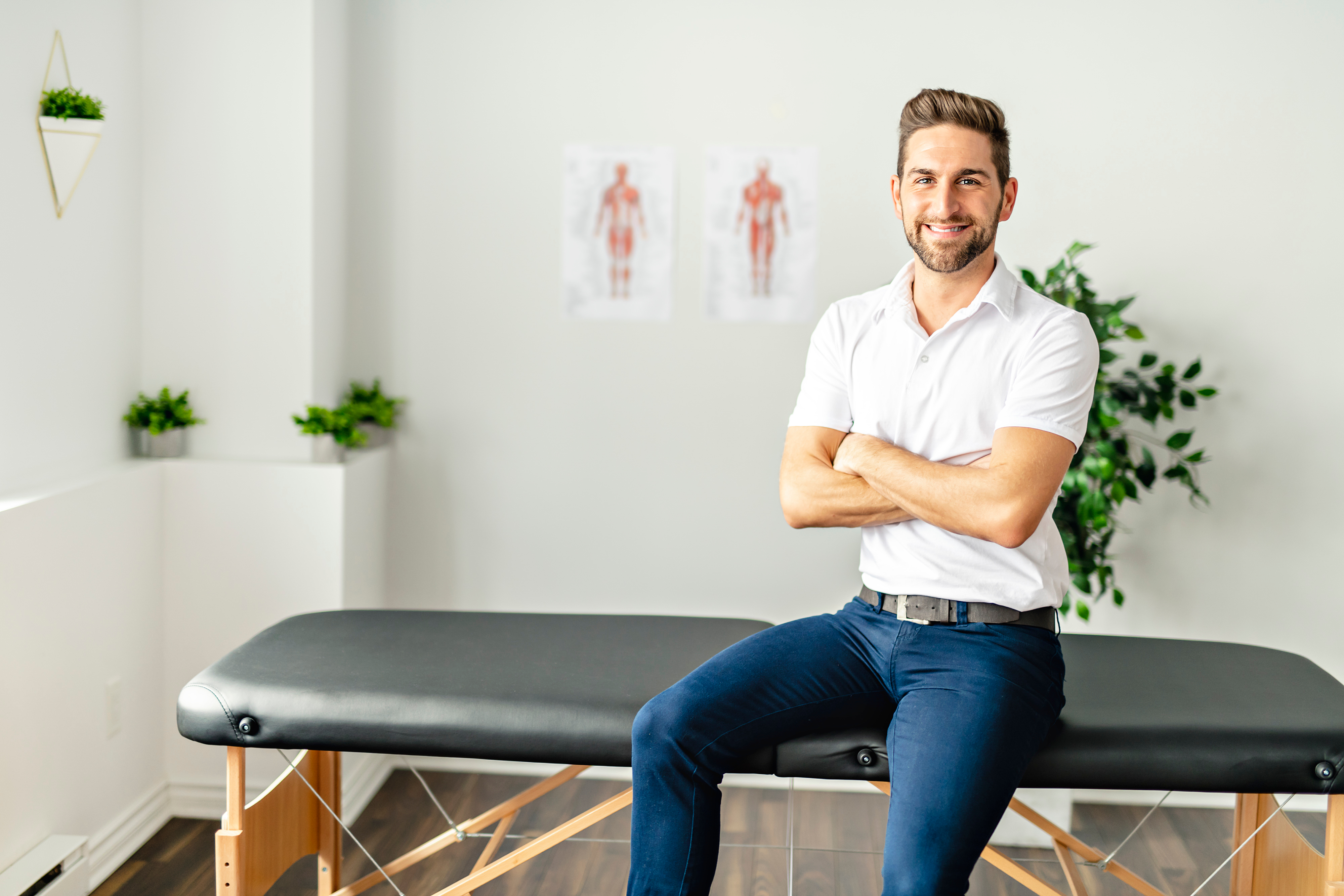Injuries happen to us humans all the time. But never more so than when we're involved in physical activity—like playing a sport of working hard on our feet. We twist our ankles, strain our backs, and tweak our rotator cuffs.
Take golf for example. A seemingly mild-mannered sport that most people play long after their prime. But the human back is not made for a one-sided golf swing, that creates a high-velocity movement through your lower back, and is repeated over and over. Your discs and joints are subjected to high loads that wear down and degenerate faster than other body parts, causing pain and sometimes permanent damage. But we keep going out to the links.
Same goes for work—lifting heavy boxes, or awkwardly turning with our back over and over on an assembly line, or even typing can wear down body parts that were not designed for repetitive motion.
When we're forced to deal with injuries, or trying to prevent those injuries, it's important we seek advice from healthcare professionals. When we're in middle school, high school, college or pro sports, we'll most likely see an Athletic Trainer. If we're out of school, we may go see a primary care physician who would refer us to a Physical Therapist.
But what's the difference between an Athletic Trainer and a Physical Therapist?
 Both are medical professionals who play a role in injury recovery. ATs generally work with—you guessed it—athletes. Physical Therapists deal with any patient who has been injured or have an illness that impacts their physical well-being.
Both are medical professionals who play a role in injury recovery. ATs generally work with—you guessed it—athletes. Physical Therapists deal with any patient who has been injured or have an illness that impacts their physical well-being.
PTs work with people who are dealing with arthritis, strokes, broken bones, and other issues that prevent activity. They work to help their patients regain or maintain mobility.
ATs work with athletes, who are mostly healthy, to recover from an injury, to keep an injury from getting worse, and to help prevent injuries.
ATs work out of schools, sports facilities, medical offices and even hospital and are mostly found on the fields and courts where the athletes spend most of their time. They have studied physical movement, injury treatment, and injury prevention for years. They hold degrees and have specific licenses and certifications. Communication is a huge part of their jobs. They work with doctors to develop treatment plans for athletes, talk with parents, coaches, and with the athletes. ATs are focused on athletes to treat injuries and prevent future injuries.
PTs work in hospitals and offices to diagnose and treat patients who are already injured, obtaining advanced degrees, certifications, and licenses to practice, similar to ATs. They utilize a wide array of tools and specialized equipment to help patients regain mobility or recover from an injury. Their patients usually are required to complete mobility exercises and the PTs monitor for improvements or any issues with their mobility. PTs are focused almost exclusively on injured patients and their recovery.
The New Focus for Athletic Trainers — the Industrial Athlete
 Humans who are performing any physical labor have been dealing with injuries long before any sport was ever invented.
Humans who are performing any physical labor have been dealing with injuries long before any sport was ever invented.
But only recently have athletic trainers moved from the school and pro sport settings over to manufacturing and distribution facilities to help treat and prevent injuries.
Musculoskeletal disorders (MSDs) are the injuries of the muscles, tendons, nerves, joints, discs and cartilage caused by heavy loads and repetitive motion. And almost all forms of manual labor require lifting, awkward movements, and repetitive motion.
So, industrial companies are looking to the world of sports for treating and preventing injuries of their workers... or in this case, their athletes.
Having a trained medical professional to give advice to workers before and after they are injured is a win-win for everyone involved. Just like the school team vying for the championship, when they need their star athletes back on the field, industrial ATs prevent injuries before they can occur, keep injuries from going bad to worse, and develop treatments to get workers back on the floor as soon as possible.
Industrial businesses taking advantage of injury prevention and triage programs have reduced lost employee work time, lowered claims and recordables, increased productivity, lowered costs, and even have happier workers.
By providing a remote licensed healthcare professional, the workers are able to walk up to a kiosk to use an iPad to chat, use a mobile phone app, or talk on a hotline whenever they have an issue. Or before the issue gets worse. They get ergonomic advice, tips on nutrition, stretching, and even footwear, as well as instructions on whether or not an injury requires a doctor visit or they can return to work. A virtual injury prevention system like this boosts worker morale and can help attract talent.
Talk to Healthy Roster today to see how you can help your Industrial Athletes perform at their best in your facility. Give all of them safety and injury coverage on every shift and at every location. For a much lower cost than hiring an onsite medical professional:

